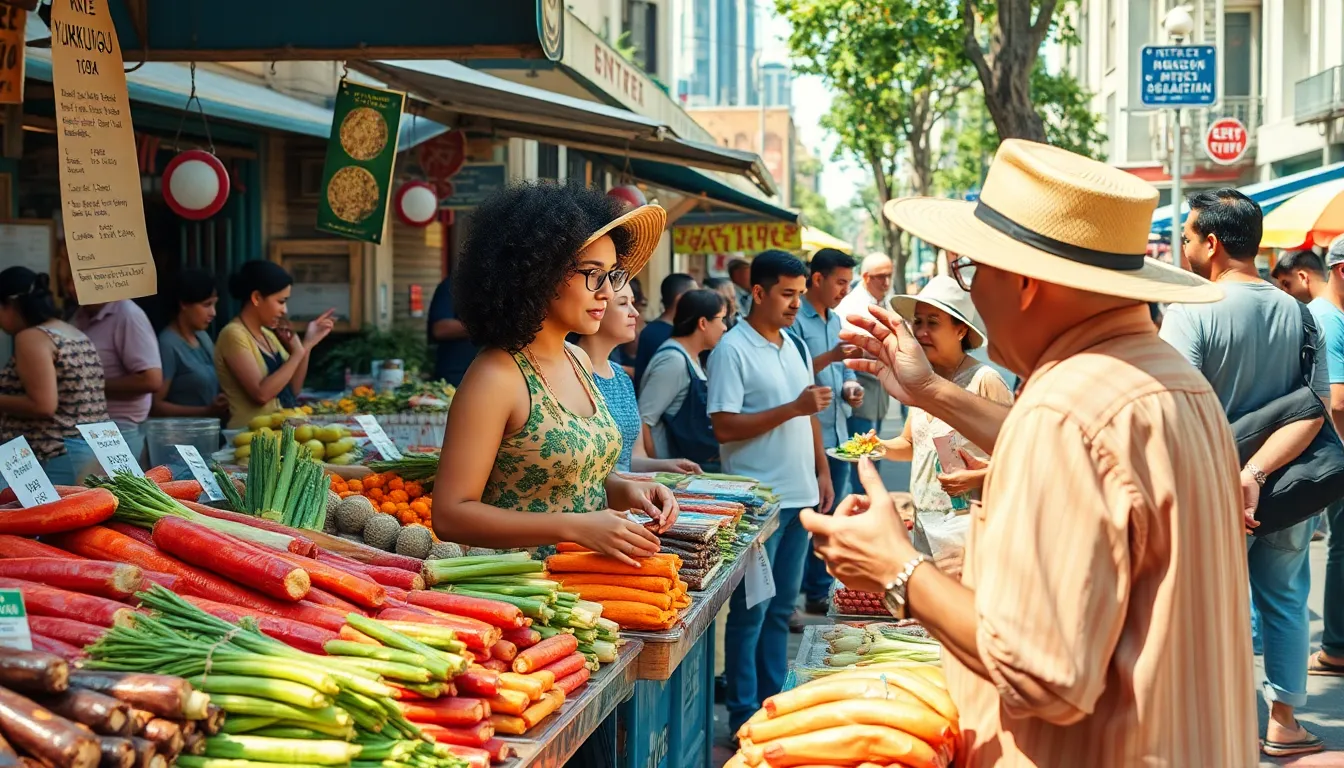Table of Contents
ToggleIn a world where prices can feel as unpredictable as a cat on a hot tin roof, the price of Yumkugu stands out like a beacon of hope. Whether you’re a seasoned foodie or just someone looking to spice up dinner, understanding Yumkugu’s price can make or break your culinary adventure. It’s not just about the cost; it’s about the experience that comes with it.
Imagine biting into a dish that transports you to a bustling market, filled with vibrant flavors and aromas. But before you dive into the deliciousness, knowing what you’re getting into financially is key. So let’s unravel the mystery of Yumkugu’s price and discover why it’s worth every penny—or perhaps a few more! Get ready to feast your eyes on some tasty insights that might just make your wallet smile.
Overview of Yumkugu Price
Yumkugu prices vary based on factors like quality, origin, and market demand. Specific sources indicate that prices can range from $15 to $50 per pound, reflecting the delicacy’s unique attributes. Notably, regional availability influences prices significantly, particularly in urban areas where the demand peaks.
Wholesale buyers often experience different pricing structures than retail consumers. Bulk purchasing can yield discounts, making it more appealing for restaurants or catering services. Additionally, seasonality plays a role; certain times of the year can see fluctuations due to harvest cycles or weather conditions impacting supply.
Local restaurants may set prices that account for preparation and presentation methods. Gourmet dishes featuring Yumkugu might command higher prices, showcasing its culinary versatility and appeal.
Comparatively, specialties from nearby regions, like truffles or exotic mushrooms, might also influence Yumkugu’s market position. Evaluating its price against similar delicacies provides insight into its value proposition for culinary enthusiasts.
Perceptions of Yumkugu prices vary among consumers. Some individuals view it as a premium ingredient worth the investment, while others seek cost-effective alternatives. Overall, understanding Yumkugu prices aids food lovers in making informed decisions, enhancing their dining experiences.
Factors Influencing Yumkugu Price

Yumkugu prices depend on various factors. Understanding them helps consumers navigate the marketplace effectively.
Market Demand
Market demand significantly affects Yumkugu pricing. When demand is high, prices often rise due to limited availability. Urban areas typically show stronger demand, leading to increased prices compared to rural locations. Events and festivals showcasing local cuisine can also spike interest, resulting in short-term price surges. Consumers view Yumkugu as a premium ingredient, increasing their willingness to pay more for quality. Overall, shifts in consumer preferences directly influence market dynamics, ultimately shaping the pricing landscape.
Production Costs
Production costs play a vital role in determining Yumkugu prices. Factors like labor, land, and harvesting methods contribute to overall expenses. Farms investing in sustainable practices may incur higher costs, which can reflect in retail prices. Weather conditions also impact production levels, as unpredictable climates can diminish supply, leading to further price increases. Transportation and storage add additional layers of cost, especially for specialty items requiring careful handling. As production costs fluctuate, Yumkugu prices adjust accordingly to maintain profitability for growers and suppliers.
Comparison with Similar Products
Yumkugu pricing aligns with several comparable products, enhancing the understanding of its value. Many gourmet ingredients command premium prices, notably truffles, which can range from $100 to $3,000 per pound depending on quality and rarity. When scrutinizing these prices, Yumkugu emerges as a more accessible option for budget-conscious food enthusiasts.
Pricing dynamics reveal variations based on factors such as region and availability. For example, truffles often see inflated costs in urban areas, making Yumkugu’s range of $15 to $50 per pound more appealing in comparison. This differential highlights Yumkugu’s market position among luxury food items.
Culinary applications further differentiate Yumkugu from similar products. Chefs often incorporate Yumkugu in high-end dishes, similar to how they use saffron, which can cost anywhere from $500 to $1,500 per pound. Interestingly, the unique flavor profile of Yumkugu provides a quality experience without the exorbitant price tag of other gourmet ingredients.
Market demand impacts pricing strategies significantly. In peak seasons, both Yumkugu and truffles face price fluctuations driven by supply and demand. However, Yumkugu’s relatively stable pricing during off-peak times suggests it offers consistent value.
Consumer preferences also shape the perception of Yumkugu against competitors. While some users view it as a worthy investment, others gravitate toward more economical alternatives like shiitake mushrooms, which typically cost around $10 to $15 per pound. This preference further indicates Yumkugu’s appeal among those seeking a premium yet affordable culinary experience.
Ultimately, analyzing Yumkugu alongside similar products assists consumers in understanding its value within the broader market landscape.
Historical Trends in Yumkugu Price
Yumkugu prices have seen fluctuations over the years, influenced by factors such as demand, quality, and regional availability. Prices often range from $15 to $50 per pound, reflecting the ingredient’s diverse quality levels. Urban areas tend to exhibit higher prices due to increased demand, especially during food festivals and events.
Wholesale buyers generally benefit from discounts on bulk purchases, making Yumkugu more accessible for restaurants and catering services. Seasonal changes further impact pricing, as harvest cycles and weather conditions determine availability and supply levels. Restaurants may charge higher prices for Yumkugu-based dishes due to preparation and presentation techniques.
When looking at market trends, consumer perceptions become evident. Many view Yumkugu as a premium ingredient that justifies its price due to its distinctive flavor profile. Comparatively, other gourmet items like truffles and saffron command much higher prices, often out of reach for budget-conscious food enthusiasts. Truffles can range from $100 to $3,000 per pound, presenting Yumkugu as a more financially viable option.
Over time, consumer interest has shaped how Yumkugu fits within the gourmet landscape. Some consumers categorize it as a worthy investment in their culinary experiences, while others may seek alternatives. Evaluating Yumkugu against similar gourmet products highlights its accessibility without compromising quality. Understanding the historical trends of Yumkugu prices assists food lovers in navigating their purchasing decisions effectively, enhancing their dining experiences.
Understanding Yumkugu pricing is essential for anyone looking to enhance their culinary journey. With prices ranging from $15 to $50 per pound, it offers a gourmet experience that remains more accessible than other luxury ingredients. Factors like regional availability and market demand significantly influence these prices, making it crucial for consumers to stay informed.
As Yumkugu continues to gain popularity, its unique flavor profile and versatility in high-end dishes justify the investment for many food enthusiasts. Whether viewed as a premium ingredient or a cost-effective alternative, Yumkugu stands out in the gourmet landscape, inviting exploration and appreciation.




